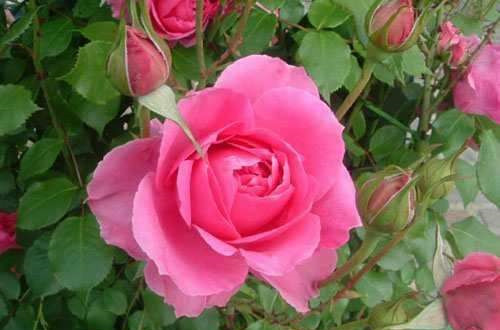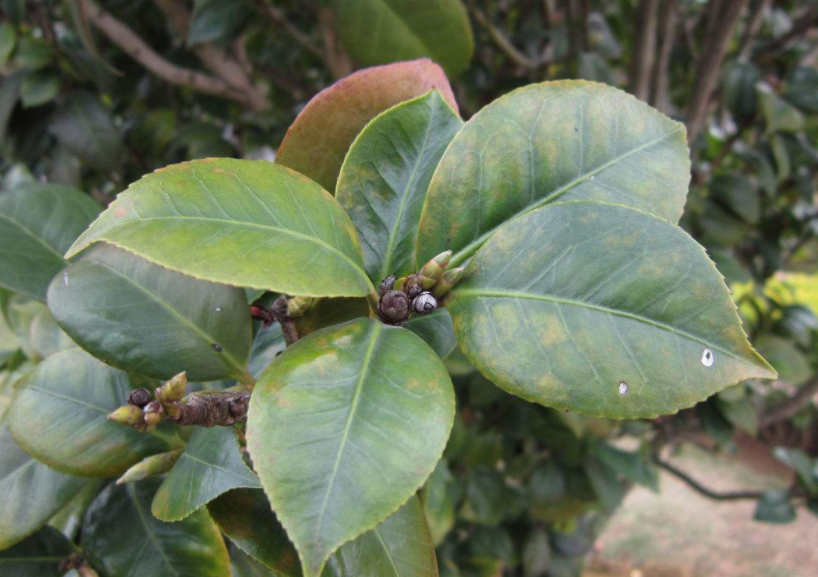What are the main reasons for the yellowing of the leaves in the indoor flowerpot?
Due to the limitation of the volume of flowerpots, the roots of potted flowers can not be freely extended downwards and around, so the root development is hindered. If improper management, watering and fertilization are improper, yellow leaves will appear more easily than flowers in the open field.
What are the main reasons for the yellowing of the leaves in the indoor flowerpot?

The causes and remedial measures are described as follows:
The main results are as follows: (1) too much watering, the basin soil is too wet for a long time, resulting in lack of oxygen in the soil, causing part of the fibrous roots to rot, hindering normal respiration and absorption of water and nutrients, causing leaves to turn yellow and fall off. After the injury, the young leaves turn pale yellow, and then the old leaves gradually turn yellow. watering should be controlled immediately, fertilization should be suspended, and the soil should be often loosened to make the soil well ventilated.
(2) drought and dehydration. Flower cultivation leakage watering or long-term watering half waist water (that is, upper wet and lower dry) will affect nutrient absorption, and it is also easy to cause dull and dull leaves and drooping leaves. First, the lower old leaves aged, and gradually withered and yellowed off from the bottom up. At this time, a small amount of water is needed and sprayed, so that it can be gradually recovered and then transferred to normal watering.
(3) to lose weight for a long time. There is no application of ammonia fertilizer or no change of soil for a long time, and there is a lack of nitrogen and other nutrients in the soil, resulting in thin branches and leaves and thin and yellow leaves. It is necessary to pour the pot in time and gradually apply rarefied mature liquid fertilizer or compound flower fertilizer into new loose and fertile culture soil.
(4) excessive fertilization. If you fertilize too much, the new leaves will be thick and uneven, and the dry tips of the old leaves will fall off. You should immediately stop fertilization and increase the amount of water to make the fertilizer flow out from the drainage hole at the bottom of the basin, or immediately pour the pot, rinse the soil block with water and then plant it again into the basin.
(5) hot and high temperature. In summer, if you put cool flowers (such as cyclamen, Golden Bell upside down, four Seasons Begonia) in a high temperature place to let the strong light shine directly, it is very easy to cause the young leaf tip and leaf edge to scorch, or the leaf yellow to fall off. Move to a well-ventilated shady place in time.
(6) excessive shading. If the sun-loving flowers are kept in shade or lack of light for a long time, it will cause the branches and leaves to grow, the leaves are thin and yellow, and they do not blossom or rarely bloom. Be careful to move the flowerpot to the sunny place.
(7) soil and water is alkaline. There are more saline and alkali in soil and water in most areas of northern China, and flowers with acid-like soil are planted, such as rhododendron, camellia, Michelia, gardenia, orchid, magnolia, sweet-scented osmanthus and so on. Due to the lack of soluble iron and other elements that can be absorbed by the soil, the leaves will gradually turn yellow. Acid soil should be selected when planting, and alum fertilizer and water should be often watered during the growth period.
(8) whether it is airtight or not. If too much nitrogen fertilizer is applied, the branches and leaves will grow luxuriantly, coupled with the long-term unpruned, resulting in insufficient light in the inner chamber branches and leaves, which is easy to cause the leaves to yellowing and falling off. Reasonable fertilization should be applied and pruning should be strengthened to make it ventilated and transparent.
(9) dry air. When the indoor air is too dry, some flowers that like the humid environment, such as hanging orchids and orchids, often appear leaf tip dryness or leaf edge scorching and so on. Attention should be paid to water spraying, plastic film cover and other methods to increase air humidity, (10) improper temperature. If the room temperature is too low in winter, the flowers are often vulnerable to cold damage, which leads to the yellowing of the leaves and death in severe cases. If the room temperature is too high, the transpiration of the plant is too high, and the root water and nutrients are in short supply, the leaves will turn yellow. Please pay attention to adjust the room temperature in time.
(11) the soil is sour. It is easy to lose acid and magnesium in southern red loam. planting flowers and trees with alkali-tolerant or mute soil, such as oleander, yellow poplar, Yingchun, etc., are often prone to green and yellowing between the veins of old leaves. Can apply calcium magnesium phosphate fertilizer or spray magnesium sulfate solution.
(12) pests and diseases. The leaf spot disease caused by fungi and other bacteria is easy to cause local necrosis of the leaves, yellow spots or patches appear, the whole leaves wither and fall off seriously, yellow and green mottles appear on the leaves after being infected by mosaic virus, and suffer from insects, red spiders and other harms, the leaves will also become local yellow withered, or even the whole leaves wither and fall off. All should be sprayed in time.
(13) strong sexual stimulation. The use of excessive concentration of pesticides in the prevention and control of diseases and insect pests, or being polluted by toxic gases in the atmosphere, or suddenly watering cold water when the temperature is high, are easy to cause local yellowing and scorching of the leaf tip or leaf surface, or even the whole plant to die. Therefore, we should pay attention to the rational use of pesticides and try to eliminate air pollution sources. Avoid watering flowers with cold water around noon in midsummer. Finally, it should be mentioned that the yellow leaves of potted flowers are sometimes caused by one reason, but they are often caused by a variety of factors, so a correct diagnosis should be made to prescribe the right medicine to the case.
Time: 2019-04-18 Click:
- Prev

What if Fujimoto rose doesn't blossom?
The vines have different flower patterns in this month, with colorful flowers and a long flowering period. they can bloom in three seasons, and clusters of flowers give off a strong fragrance when they bloom, which is of good ornamental value and is very popular. But in the breeding process, the vine does not blossom this month is a common problem, so, Fujimoto rose does not blossom is how to return a responsibility? What should we do?
- Next

Control methods of Camellia Diseases
Camellia disease control methods, when the quantity is small, the mildew layer can be gently scrubbed with clean water; when the quantity is large, 50% carbendazim 500-800 times solution can be sprayed to control. Timely elimination of shell insects, aphids and other pests can reduce the occurrence of soot disease. Grey spot disease, soot disease and root rot of camellia are more common.
Related
- Fuxing push coffee new agricultural production and marketing class: lack of small-scale processing plants
- Jujube rice field leisure farm deep ploughing Yilan for five years to create a space for organic food and play
- Nongyu Farm-A trial of organic papaya for brave women with advanced technology
- Four points for attention in the prevention and control of diseases and insect pests of edible fungi
- How to add nutrient solution to Edible Fungi
- Is there any good way to control edible fungus mites?
- Open Inoculation Technology of Edible Fungi
- Is there any clever way to use fertilizer for edible fungus in winter?
- What agents are used to kill the pathogens of edible fungi in the mushroom shed?
- Rapid drying of Edible Fungi

